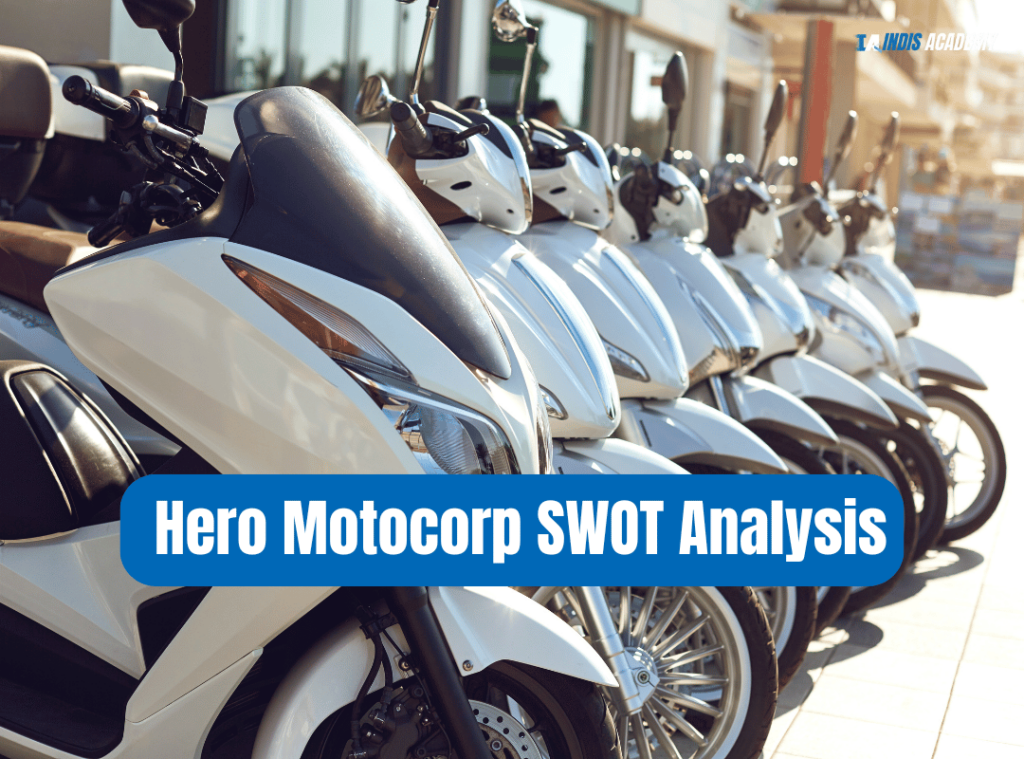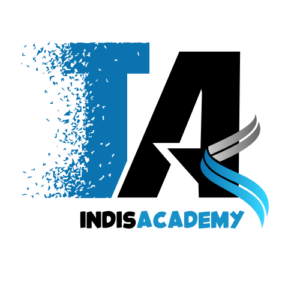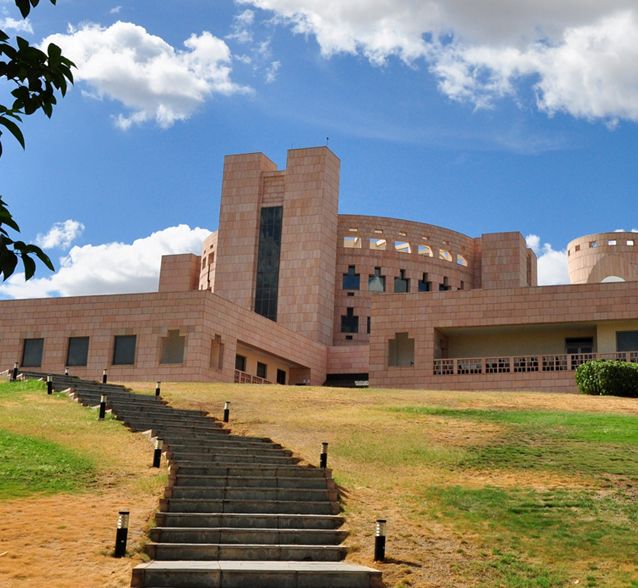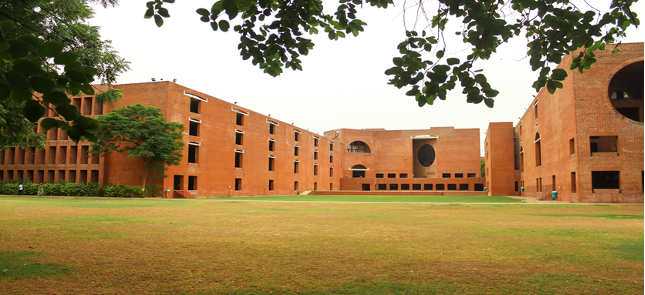Understanding a company’s strategic position in the market can be quite insightful, and one effective way to achieve this is through a SWOT analysis. This analytical framework stands for Strengths, Weaknesses, Opportunities, and Threats. It helps in evaluating a company’s internal capabilities and external possibilities, providing a comprehensive overview of its strategic landscape.
Hero Motocorp, the world’s largest manufacturer of motorcycles and scooters, offers an intriguing subject for a SWOT analysis. With a robust presence in the two-wheeler market, Hero Motocorp has built a reputation for reliability and innovation. But what makes a SWOT analysis essential for understanding Hero Motocorp?
By examining Hero Motocorp’s strengths, such as its extensive distribution network and strong brand loyalty, we can appreciate what sets it apart from competitors. On the flip side, identifying weaknesses, like over-dependence on the Indian market, highlights areas needing improvement. Opportunities, including expansion into new international markets, reveal potential growth avenues. Lastly, recognizing threats, such as intense competition and fluctuating raw material prices, prepares the company to mitigate risks.
A SWOT analysis of Hero Motocorp not only sheds light on its current market standing but also guides strategic decision-making for future success. Let’s delve deeper into this insightful analysis to understand the dynamics that drive Hero Motocorp forward.
In-Depth Hero Motocorp SWOT Analysis
Hero Motocorp is a household name in the world of two-wheelers, known for its reliable and innovative motorcycles and scooters. Founded in 1984 by Brijmohan Lall Munjal, Hero Motocorp has grown to become the largest two-wheeler manufacturer in the world. Headquartered in India, the company is committed to “Be the Future of Mobility,” focusing on sustainable and eco-friendly transportation solutions. With a vast network of dealerships and service centers, Hero Motocorp ensures accessibility and support for its customers globally. The company’s dedication to quality and customer satisfaction has cemented its significance in the industry, making it a trusted choice for millions of riders.
| Detail | Information |
|---|---|
| Founding Date | 1984 |
| Founder | Brijmohan Lall Munjal |
| Company Size | Over 8,000 employees |
| Country | India |
| Headquarters | New Delhi, India |
| Mission | “Be the Future of Mobility” |
| Industry | Two-wheeler manufacturing |
| Key Products | Motorcycles, Scooters |
| Global Presence | Over 40 countries |
Hero Motocorp’s journey from a small Indian company to a global leader in the two-wheeler industry is a testament to its innovation, resilience, and customer-centric approach.
Hero Motocorp Products & Competitors
Hero Motocorp offers a diverse range of motorcycles and scooters to suit various needs. The Splendor series, including Splendor Plus and Super Splendor, are perfect for daily commuting with their durability and fuel efficiency. For a sporty ride, the Xtreme 160R and Xtreme 200S deliver power and style. The Passion Pro and Glamour models combine practicality with a trendy look, appealing to young riders. In the scooter segment, the Maestro Edge, Pleasure Plus, and Destini 125 provide convenient and comfortable options for city travel.
Hero Motocorp faces strong competition from Bajaj Auto, known for its Pulsar and Platina series, and Honda Motorcycle and Scooter India (HMSI), with the popular Activa scooters. TVS Motor Company, with its Apache and Jupiter models, also competes vigorously. Additionally, Royal Enfield, known for its classic and cruiser bikes, challenges Hero in the premium motorcycle segment.
This overview of Hero Motocorp’s products and its main competitors highlights the competitive and dynamic nature of the two-wheeler market, showcasing why Hero remains a top choice for riders worldwide.
Hero Motocorp Competitors Details
| Competitor | Description |
|---|---|
| Bajaj Auto | Bajaj Auto is a major player in the two-wheeler industry, known for its popular Pulsar and Platina series. They are recognized for their innovative designs and performance. |
| Honda Motorcycle and Scooter India (HMSI) | HMSI is a subsidiary of Honda, dominating the scooter segment with their highly successful Activa series. They are renowned for their reliable and efficient vehicles. |
| TVS Motor Company | TVS is a prominent competitor with its Apache and Jupiter models. They offer a wide range of motorcycles and scooters that are known for their quality and affordability. |
| Royal Enfield | Royal Enfield caters to the premium segment with its classic and cruiser bikes. Their iconic Bullet and Classic series have a loyal following among enthusiasts. |
| Suzuki Motorcycle India | Suzuki is known for its stylish and performance-oriented motorcycles like the Gixxer series. They are gaining popularity with their well-built and reliable two-wheelers. |
| Yamaha Motor India | Yamaha offers a range of sporty and performance-focused bikes, such as the FZ series and R15. They are popular among young riders looking for speed and style. |
Sharing these interesting facts about Hero Motocorp’s competitors can help us understand the vibrant and competitive nature of the two-wheeler market. Each company brings something unique to the table, making the industry diverse and exciting.
Hero Motocorp SWOT Analysis
A SWOT analysis of Hero Motocorp offers a snapshot of its strategic position by evaluating its Strengths, Weaknesses, Opportunities, and Threats. This insightful tool helps understand what Hero excels at, such as its strong brand and extensive network, while identifying areas for improvement like market dependence. It also highlights growth opportunities and potential risks. By examining these aspects, Hero Motocorp can make informed decisions to maintain its leadership in the two-wheeler industry. This analysis is essential for anyone looking to grasp the company’s market dynamics and future prospects.
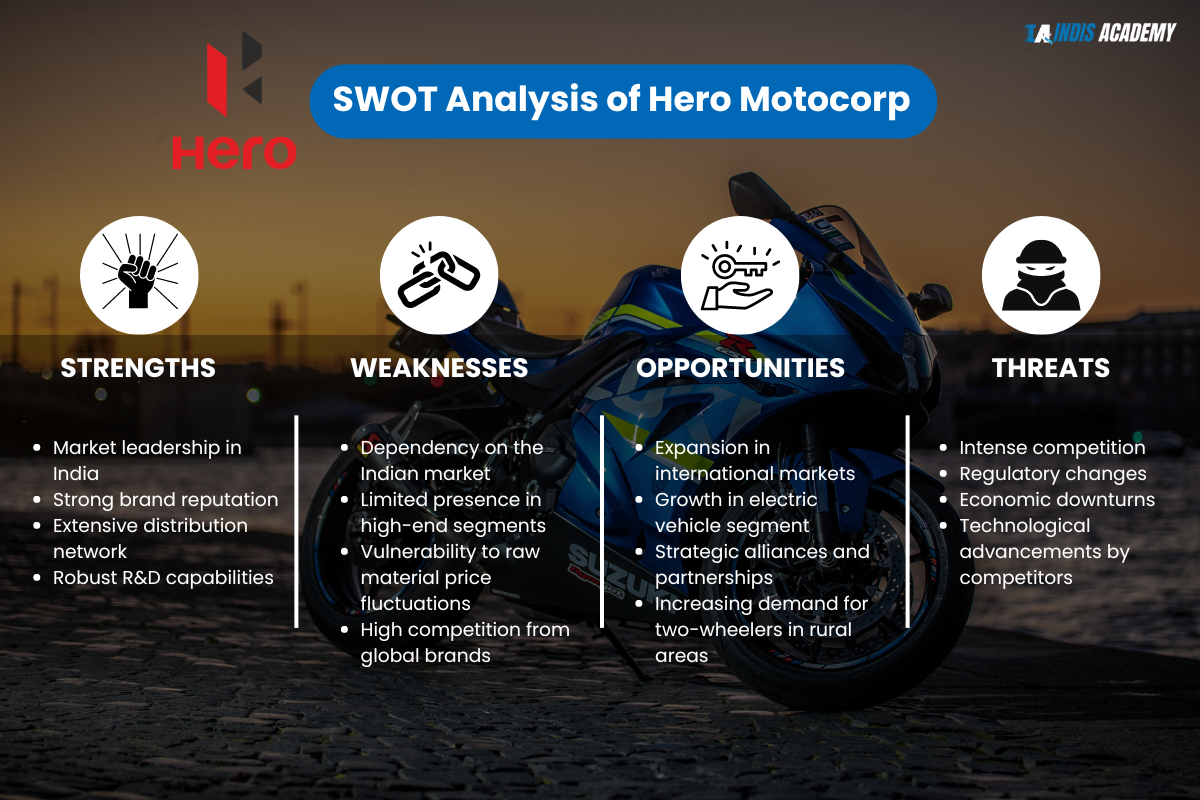
Strengths
- Strong Brand Presence: Hero Motocorp is a household name in India and many other countries. Its brand is synonymous with reliability and affordability, making it the go-to choice for millions of riders.
- Extensive Distribution Network: With a vast network of dealerships and service centers, Hero ensures that its products and services are easily accessible to customers, enhancing customer satisfaction and loyalty.
- Wide Product Range: From commuter bikes like the Splendor to sporty models like the Xtreme, Hero offers a diverse range of motorcycles and scooters to cater to different segments of the market.
- Innovative R&D: Hero invests heavily in research and development to stay ahead of the curve. Its commitment to innovation is evident in its eco-friendly technologies and advanced features in new models.
- Market Leadership: As the world’s largest manufacturer of two-wheelers, Hero Motocorp enjoys a dominant market position, giving it significant leverage over competitors in terms of pricing and market influence.
Weaknesses
- Dependence on Indian Market: A significant portion of Hero’s revenue comes from the Indian market. This heavy dependence makes the company vulnerable to economic fluctuations and regulatory changes in India.
- Limited International Presence: Despite its size, Hero’s presence in international markets is relatively limited compared to some competitors. Expanding globally remains a challenge for the company.
- High Competition: The two-wheeler industry is highly competitive, with numerous strong players like Bajaj, Honda, and TVS. This intense competition can impact Hero’s market share and profitability.
- Rising Production Costs: Increasing costs of raw materials and labor can put pressure on Hero’s margins. Managing these costs while maintaining affordability is a constant challenge.
- Dependence on Single Product Segment: Hero’s primary focus on two-wheelers limits its diversification. Any significant downturn in the two-wheeler market could adversely affect its overall performance.
Opportunities
- Global Expansion: There is a huge potential for Hero to expand its footprint in international markets. Tapping into emerging markets in Africa, Latin America, and Southeast Asia could drive growth.
- Electric Vehicle Market: The shift towards electric mobility presents a significant opportunity. Hero’s investments in electric vehicle (EV) technology can position it as a leader in the growing EV market.
- Product Diversification: Introducing new product lines, such as electric bicycles or three-wheelers, can help Hero diversify its offerings and reduce dependence on traditional two-wheelers.
- Collaborations and Partnerships: Forming strategic alliances with global automotive companies can enhance Hero’s technological capabilities and market reach, fostering innovation and growth.
- Government Initiatives: Benefiting from government initiatives promoting sustainable transportation and manufacturing can provide Hero with incentives and support for growth and development.
Threats
- Intense Competition: The two-wheeler market is crowded with strong competitors like Bajaj Auto, Honda, and TVS, which continually innovate and compete on price, features, and quality.
- Regulatory Changes: Changes in government regulations, such as stricter emission norms and safety standards, can increase production costs and affect product prices, impacting sales.
- Economic Downturns: Economic slowdowns or recessions can reduce consumer spending on non-essential items like motorcycles, affecting Hero’s sales and profitability.
- Fluctuating Raw Material Prices: Volatility in the prices of raw materials like steel and aluminum can affect Hero’s production costs and margins, posing a threat to its financial stability.
- Technological Disruptions: Rapid advancements in technology and shifts towards electric and autonomous vehicles can disrupt the traditional two-wheeler market, challenging Hero to adapt quickly.
By understanding these strengths, weaknesses, opportunities, and threats, we get a comprehensive view of Hero Motocorp’s strategic position and the factors influencing its journey in the competitive two-wheeler industry.
Conclusion
Wrapping up our SWOT analysis of Hero Motocorp, we can see a clear picture of its strategic position in the two-wheeler industry. Hero’s strong brand presence, extensive distribution network, diverse product range, innovative R&D, and market leadership are key strengths that set it apart from competitors. However, its heavy reliance on the Indian market, limited international presence, high competition, rising production costs, and focus on two-wheelers reveal areas needing attention.
The opportunities for Hero Motocorp are vast. Global expansion, tapping into the electric vehicle market, product diversification, forming strategic alliances, and leveraging government initiatives offer promising growth avenues. On the flip side, threats like intense competition, regulatory changes, economic downturns, fluctuating raw material prices, and technological disruptions present challenges that Hero must navigate carefully.
In summary, Hero Motocorp stands as a dominant force in the two-wheeler industry, poised for growth and innovation. By capitalizing on its strengths and opportunities while addressing its weaknesses and threats, Hero can continue to lead the market and drive forward with resilience and adaptability. This SWOT analysis provides valuable insights into Hero’s strategic landscape, guiding future decisions to maintain its leadership and foster long-term success.

